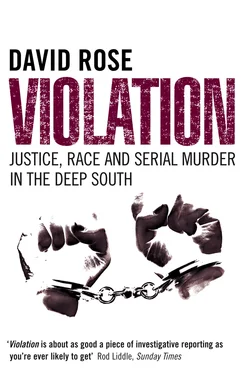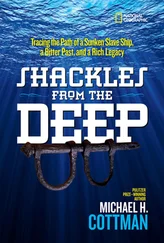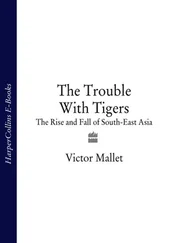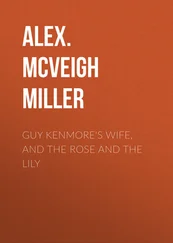Having travelled back to Columbus after the Convention broke up on 17 March, Ashburn took lodgings at the Perry House, a boarding establishment where he had stayed before, but when the owner forced him to leave he moved to a humble shotgun house on the corner of Thirteenth Street and First Avenue. Its other occupants included the Columbus head of the pro-Republican Loyal League, and the house’s owner, a black woman named Hannah Flournoy.
The most detailed contemporary account of what happened next was written up in a dispatch for the New York Tribune on 1 April by the Reverend John H. Caldwell, the presiding Elder of the Methodist Episcopal Church in LaGrange, forty miles to the north. Caldwell was a leading ‘Christian scalawag’, an early white prophet of racial tolerance who worked hard after the war to create a bi-racial church in Georgia. He had even organised special religious camps for freedmen in LaGrange, attended by up to six thousand former slaves. A frequent visitor to Columbus, he was present in the city during the events he described.
A political as well as a religious scalawag, Caldwell addressed a mass meeting of Republicans in the courthouse square on the afternoon of Saturday, 29 March. He pieced together his account of what happened after the meeting by talking with members of the Columbus coroner’s jury:
Between twelve and one o’clock last night a crowd of persons, estimated at from thirty to forty in number, went to the house where Mr Ashburn lodged, surrounded the building, broke open the rear and front doors, and murdered him in his room. He received three fatal shots, one in the head between the eyes, one just below and to the rear of the hip, and another one in the mouth, which ranged upward. His clothing had from ten to fourteen bullet holes in them [sic]. Five persons entered his room and did the murderous deed; the rest were in other parts of the house and yard. The crowd remained from ten to fifteen minutes, during which time no policeman made his appearance. As the murderous crew were dispersing, however, some policemen made their appearance on the opposite side of the street. They could give no account of the affair when examined. This deed was perpetrated on one of the principal streets, in the most public part of the city … all the assassins wore masks, and were well-dressed.
Ashburn’s body was barely cold before those who thought his murder justified began to assail his memory. The Sun’s report the following day was the beginning of a series of claims that would be made in many subsequent accounts, none of which, according to Caldwell, was true. Far from being a cold-blooded political assassination by the Klan or its supporters, the paper said, Ashburn’s murder owed its origins to his own tempestuous nature, and to his habit of waging disputes with members of his own party.
Caldwell protested in his dispatch for the Tribune that the claim that Ashburn’s friends were to blame for his murder was merely an attempt ‘to cover up and confuse the whole affair … everyone in Columbus knows for what purpose these vile insinuations are put out. See how The Sun abuses and traduces the character of poor Ashburn, even while his mangled corpse lies before the very eyes of the editor. Ye people of America, do ye not understand all this?’ In Caldwell’s view, the Sun’s pro-Klan coverage before the killing suggested that its editor ‘knew beforehand what was going to happen’. Now, he went on, Columbus’s advocates of racial equality were overcome with understandable terror. ‘The sudden, horrible, cowardly and brutal murder of Colonel Ashburn, by this infamous band, shows that their purpose is murder. They are bent on midnight assassinations of the darkest, bloodiest and most diabolical character. Union men all over the city now feel that their lives are at every moment in danger. They do not know at what hour of the night they may be massacred in their bed.’
Few other white people saw things quite that way. The Ashburn murder is a perfect example of what the contemporary historian of Southern violence W. Fitzhugh Brundage terms ‘flashpoints of contested memory’, events whose competing accounts have as much to do with ‘power, authority, cultural norms and social interaction as with the act of conserving and recalling information’. In Ashburn’s case, old Dixie, the Klan and the Democrats were soon trouncing their opponents in the propaganda battle. By the time the Congressional Committee heard testimony in the summer and autumn of 1871, Ashburn’s characterisation as an evil-doer largely responsible for his own, richly merited, demise was much more advanced. Some of the witnesses took their cue from Radical Rule , a virulently hostile pamphlet that is thought to have been written by William Chipley, one of the men accused of murdering Ashburn. Its claims and phraseology surfaced repeatedly in their evidence. According to Radical Rule , Ashburn had been remarkable as an overseer ‘only for his cruelty to the slaves’. None other than Henry Lewis Benning, the Columbus attorney and former Confederate General, told the committee that Ashburn ‘was reputed to be a very severe overseer – brutal’. Benning admitted he had never met Ashburn, but happily added further slanders. Again, the influence of Radical Rule , which claimed that Ashburn died ‘in a negro brothel of the lowest order’, is clear. Benning told the committee: ‘After the war was over he joined in with the freedmen, and made himself their especial friend – he was ahead of almost every other white man in showing devotion to their interests. He quit his wife and took up with a negro woman in Columbus, lived with her as his wife (so said reputation) and at a public house at that; I mean a house of prostitution.’
Hannah Flournoy, the black woman who owned Ashburn’s last residence, and who witnessed his murder, also testified. After the shooting, she said, ‘They run me out of Columbus.’ Too frightened to return, she ‘lost everything I had there’. Shortly before Ashburn’s death, she added, she had been given a letter addressed to Ashburn. He opened it in her presence, so that she could see it was ‘a letter by the Ku Klux, with his coffin all drawed on it’.
Trying to rescue Ashburn’s reputation for posterity, Caldwell told the committee that he had known Ashburn for years before the war, ‘and I never heard anything against him’. Far from having been a cruel slave overseer, ‘He was a very clever, kind man, and I never heard anything against him personally.’ In Caldwell’s view, Ashburn fell ‘a martyr to liberty’, having been ‘among the very few men in Georgia who openly resisted the secession mania all through the war’. The experience of serving in the Georgia Convention had tempered his radical views, and he had done his utmost to negotiate political compromise ‘in a subdued and conciliatory spirit to the moment of his death’. Other independent witnesses supported his account.
Caldwell’s efforts were to no avail. In the Columbus histories by Telfair and Worsley, it is the Ashburn depicted in Radical Rule , the divisive, adulterous, former ‘brutal overseer’, whose death is memorialised, not the principled would-be statesman. As late as 1975, in an article on the case for the Georgia Historical Quarterly , Elizabeth Otto Daniell cites the pamphlet produced by Ashburn’s enemies as her source for the statement that he had once been a ‘cruel overseer of slaves’.
Historical events do not become flashpoints of contested memory without good reasons. One of the explanations for the posthumous vilification of G.W. Ashburn is the political struggle of which his murder formed a significant part: the largely successful terrorist campaign to limit or remove the rights of Georgia’s African-Americans. This ‘required’ their most important white Columbus advocate to be demonised, and at the same time to be seen as having acted over many years against their real interests. In Telfair’s phrase, the purpose of Ashburn’s assassination was ‘merely to remove a public menace’. Generations after his death, the guardians of white Southern memory found that the bleakest assessments of his life and character still fitted with their overall view of Reconstruction as a time of Northern cruelty and injustice.
Читать дальше












